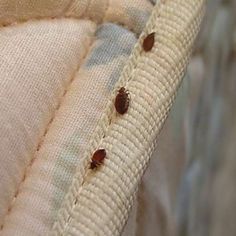Relied On EZ Las Vegas Pest Control - Neighborhood Specialists
Relied On EZ Las Vegas Pest Control - Neighborhood Specialists
Blog Article
Effective Insect Control Methods to Combat Bed Pest Problems
As the frequency of bed insect problems proceeds to increase, the need for efficient bug control approaches has come to be more important. By utilizing a combination of aggressive steps and targeted therapies, it is possible to deal with bed insect problems efficiently.
Understanding Bed Bug Behavior
Bed pest actions is an essential element to comprehend when developing effective bug control strategies. Comprehending exactly how bed pests act is fundamental in eliminating problems successfully. Bed insects are nighttime insects that prey on the blood of humans and animals. They are competent at concealing in cracks and gaps near their hosts, making discovery and elimination challenging. These pests are drawn in to heat and carbon dioxide, which is why they frequently stay in bed linen, furniture, and wall surfaces close to where individuals rest or rest.
Bed bugs replicate quickly, with women laying thousands of eggs in their lifetime. Their ability to endure for months without feeding makes them resistant parasites that require thorough treatment approaches for obliteration. Additionally, bed bugs display an actions known as "stressful insemination," where men puncture the females' abdomen to inseminate, bring about prospective infections and physical damage.
Evaluation and Discovery Techniques
Recognizing bed insect behavior lays the groundwork for carrying out efficient assessment and detection strategies in combating problems. When conducting examinations for bed bugs, it is critical to be extensive and systematic. Bed bugs are experienced at concealing in splits and crevices, so making use of a flashlight and a magnifying glass can aid in discovering their visibility.
In cases where visual examinations may not be conclusive, employing detection pet dogs educated to sniff out bed pests can be very efficient. On the whole, a combination of visual inspections, keeping an eye on tools, detection canines, and thermal video cameras can boost the accuracy and effectiveness of identifying bed pest invasions.
Non-Chemical Treatment Choices
Executing non-chemical therapy alternatives is crucial in handling bed pest problems while prioritizing ecological security and sustainability. Warmth therapy is a widely utilized non-chemical method that involves elevating the temperature level in ravaged areas to degrees lethal to bed pests. This technique permeates deep right into furniture, cushions, and wall dental caries, effectively getting rid of bed insects in all life stages. Another non-chemical approach is vapor treatment, which entails utilizing high-temperature vapor to eliminate bed pests on contact. Vacuuming plagued areas with a high-powered vacuum cleaner can also help in reducing bed insect populaces by physically eliminating them from surface areas. Additionally, enclosing bed mattress and box springtimes with bed bug-proof covers can catch existing bed bugs inside and prevent new infestations. Additionally, making use of diatomaceous planet, an all-natural insecticide, can be effective in killing bed insects by damaging their external safety layer. By utilizing these non-chemical therapy options, individuals can deal with bed insect invasions successfully while lessening environmental effect.
Effective Chemical Control Approaches

Among one of the most typical courses of pesticides utilized for bed bug control is pyrethroids. These chemicals work by disrupting the bed insects' worried system, ultimately bring about paralysis and death. Nevertheless, with time, bed pests have actually established resistance to pyrethroids, requiring the use of alternative chemicals such as neonicotinoids, desiccants, or insect growth regulators.

Stopping Future Infestations
To lessen the danger of future bed pest problems, proactive precautionary actions should be applied. One important step is to frequently evaluate possible entrance points for bed insects, such as cracks in wall surfaces, furniture seams, and electric outlets. Sealing these entry factors with caulk or various other proper products can help stop bed insects from getting to your home. In addition, lowering mess in your home can remove hiding spots for bed insects, making it less complicated to spot and deal with any type of prospective invasions at an early stage.
Another effective precautionary step is to frequently clean and declutter your living areas. Vacuuming rugs, rugs, and furnishings can help remove any bed pests or eggs that might exist. Washing and drying bed linens, linens, and apparel on high warm can additionally kill any bed insects or eggs that could be concealing in these items. Being careful when acquiring second-hand furniture or clothing can help protect against the introduction of bed insects into your home.
Conclusion

Report this page